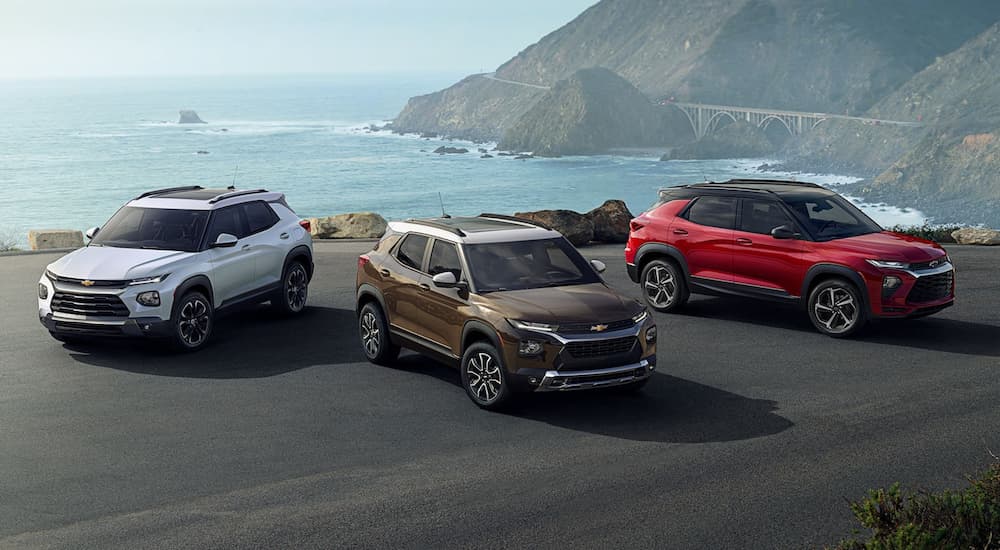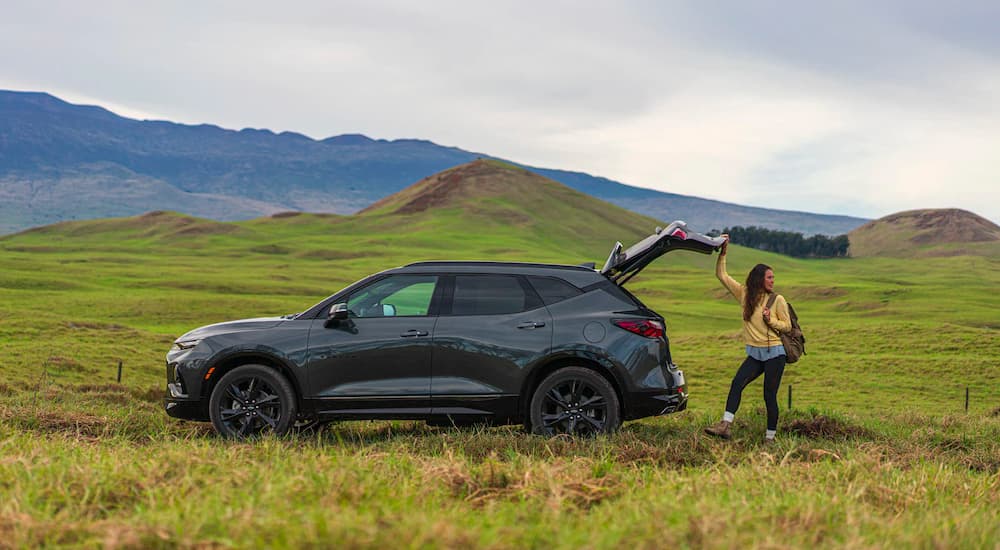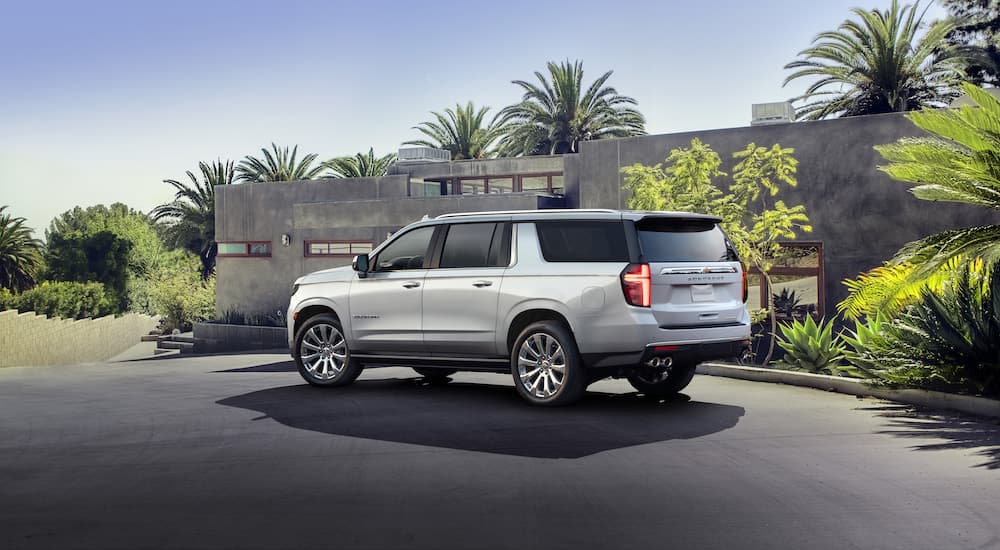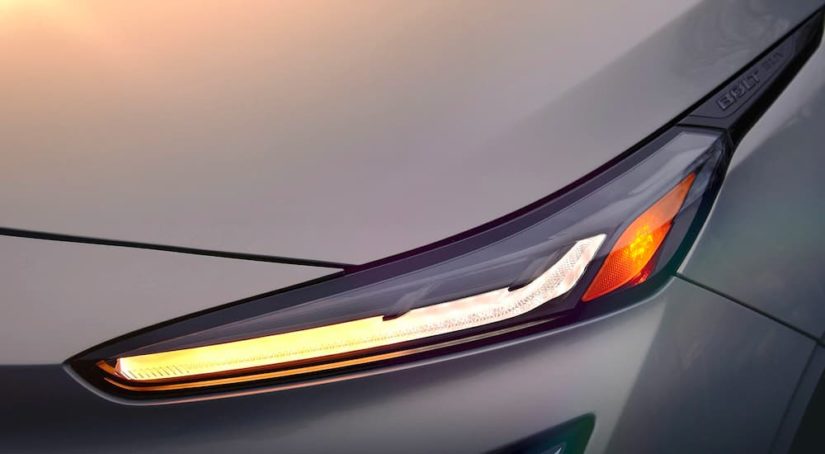There are many different ways to approach buying your next vehicle. While some people like to figure out the kind of horsepower or towing figures they need, others like to look at what interior features are available and go from there. If you’re heading to a Chevy certified used SUV dealer soon but are unsure how to select the right model for you, consider size first.
Looking at the Chevy lineup from the last couple years, there are seven different crossover and SUV models available, which is simultaneously exciting and tricky; which of them has everything you need in a new vehicle? You can cut through many of these options by determining how large a vehicle you need, and then going from there; let’s take a look at each of Chevy’s SUVs in their 2022 lineup—in ascending order from smallest to largest.
The Chevy Bolt EUV
First up, we have the Bolt EUV, which is an all-electric subcompact crossover and one of the smallest SUVs from Chevy. If you’re not interested in switching to an Electric Vehicle (EV), then you might want to move on to the Trailblazer, but otherwise, this is a great place to start.
From the outside, the Bolt EUV measures about 169″ in overall length, nearly 70″ in width, and more than 63″ in height. It has a wheelbase of just over 105″. Moving inside, this two-row model offers seating for up to five passengers. Up front, you get 40″ of headroom and about 44″ of legroom, while rear passengers get nearly 38″ of headroom and more than 39″ of legroom. Overall, the Bolt EUV provides more than 96 cu.ft. of total passenger volume; plus you get about 16 cu.ft. of rear cargo space and nearly 57 cu.ft. of total cargo volume behind the front seats. It’s definitely a subcompact model, but if that works for you, then the Bolt EUV is a great choice.

The Chevy Trailblazer
The Trailblazer is a subcompact crossover model and the smallest one in Chevy’s lineup with a standard gas-powered engine. At the moment, the Bolt EUV is the only EV crossover available from Chevy, but at least two more will be joining it in the years ahead. If you’re looking at certified used models, then that’s not something you need to worry about. The Trailblazer measures just over 173″ in length, 71″ in width, and stands around 65″ high with some slight variation depending on trim level. It has about a 104-inch wheelbase.
Inside the Trailblazer, you get 40″ of headroom in models without a sunroof and nearly 41″ of legroom up front; rear-seat passengers get about 38″ of headroom without a sunroof and nearly 40″ of legroom. Overall, the Trailblazer has just over 25 cu.ft. of cargo area in the rear and more than 54 cu.ft. of total cargo volume. You can see this is far more rear cargo space, but a bit less overall compared to the Bolt EUV.
The Chevy Equinox
Next up, we have the Equinox. One of Chevy’s most popular models, this compact crossover SUV is quite a bit larger than the Trailblazer. This is also a two-row model with seating for up to five people, as is the Trailblazer, and it measures just over 183″ in total length; that’s nearly a foot longer than the smaller SUV. The Equinox is more than 72″ wide and stands at more than 65″ in height with a wheelbase of more than 107″.
You’ll find 40″ of headroom up front in the Equinox in models without a sunroof and nearly 41″ of legroom. Your passengers in the back seat will get more than 38″ of headroom if you don’t have a sunroof and almost 40″ of legroom. You get more than 103 cu.ft. of total passenger volume inside the Equinox. There is nearly 30 cu.ft. of rear cargo volume in the Equinox and almost 64 cu.ft. of total cargo space; this is significantly more than the Trailblazer offers.

The Chevy Blazer
The Blazer is a midsize SUV, putting it about in the middle of the Chevy lineup in terms of size. We’re still looking at a two-row model, but this is the largest option with just two rows of seating from Chevy. The Blazer measures more than 191″ in overall length, about 8” longer than the Equinox, with more than 76″ in width and 67″ in height; its wheelbase is over 112″ in length.
Inside the Blazer, you get more than 39″ of headroom and 41″ of legroom up front. Your passengers behind you get more than 38″ of headroom without a sunroof and nearly 40″ of legroom; it has over 107 cu.ft. of total passenger volume inside. The Blazer has more than 30 cu.ft. of rear cargo volume, with more than 64 cu.ft. of total cargo space. But even though it’s a larger vehicle than the Equinox, the Blazer’s cargo space inside is nearly identical.
The Chevy Traverse
The Traverse is our first option from Chevy with three rows of seating, though its third row is definitely best for children. Measuring nearly 206″ in total length, this is more than a foot longer than the Blazer; the Traverse is more than 78″ wide and stands nearly 71″ tall. It has a wheelbase of almost 121″—substantially longer than the Blazer as needed for the third row of seating.
Inside, you’ll get more than 42″ of headroom in models without a sunroof along with 41″ of legroom. Second-row passengers will enjoy 40″ of headroom and more than 38″ of effective legroom, while passengers in the third row get 38″ of headroom and just over 33″ of legroom. In total, the Traverse has more than 157 cu.ft. of total passenger volume thanks to the third row. There are 23 cu.ft. of rear cargo space, nearly 58 cu.ft. of cargo space with the third row folded, and more than 98 cu.ft. of total cargo volume.
The Chevy Tahoe
The Tahoe is quite a bit larger than the Traverse and a better option if you want your third-row passengers to be more comfortable. It is more than 210″ long, 81″ wide, and nearly 76″ tall. With a wheelbase of almost 121″, there’s not as much difference between it and the Traverse.
Inside the Tahoe, you get more than 42″ of headroom up front with more than 44″ of legroom. Your second-row passengers will get nearly 39″ of headroom and 42″ of legroom, while folks in the third row get more than 38″ of headroom and nearly 35″ of legroom. You’ll find more than 25 cu.ft. of rear cargo space, with more than 72 cu.ft. of cargo volume behind the second row and a total of almost 123 cu.ft. of cargo space.

The Chevy Suburban
One thing worth noting about both the Tahoe and Suburban is they were redesigned for the 2021 model year to be larger inside and out, so keep that in mind if you’re looking at certified models from other years. That said, the current Suburban is more than 225″ in length; that’s more than four feet longer than the Trailblazer. It measures more than 81″ wide and nearly 76″ in width. It has a 134” wheelbase that creates an incredibly spacious interior.
Speaking of that interior, you’ll get more than 42″ of headroom up front along with more than 44″ of legroom. Your second-row passengers get about 39″ of headroom and 42″ of legroom (nearly identical to the Tahoe), but your friends in the third row can enjoy more than 38″ of headroom and nearly 37″ of legroom. What’s truly exceptional is more than 41 cu.ft. of rear cargo space, nearly 94 cu.ft. of cargo volume behind the second row, and almost 145 cu.ft. of total cargo space inside the Suburban. That’s more than double the cargo space inside compared to the Blazer.
As you can see, your choice of SUV drastically impacts your ability to fit passengers comfortably and carry cargo. Just note that size isn’t everything, as larger vehicles tend to carry higher fuel costs and a heftier price tag. Be sure to factor this in when you determine which size is right for you.



